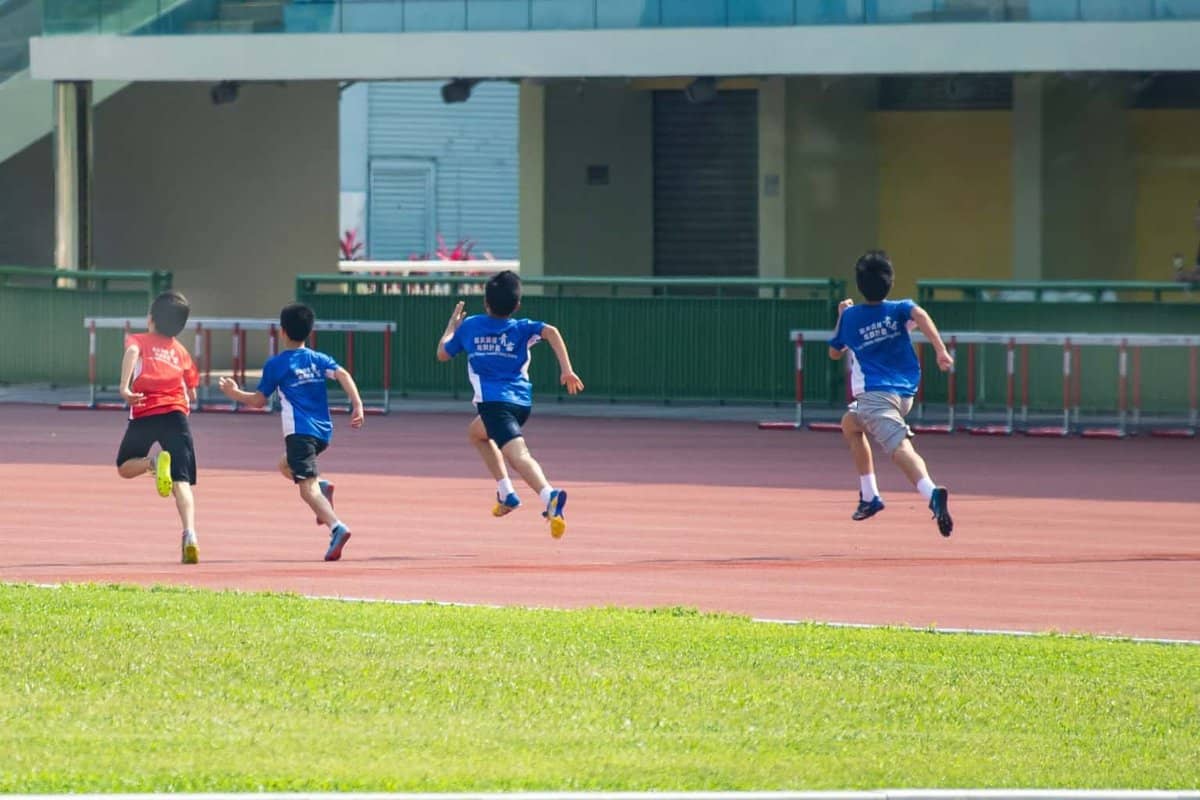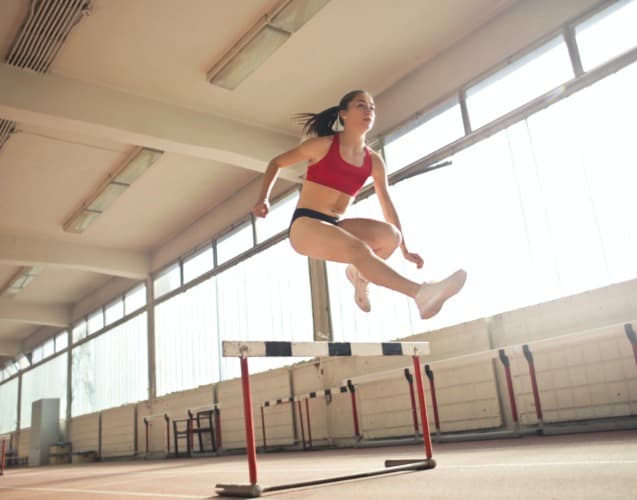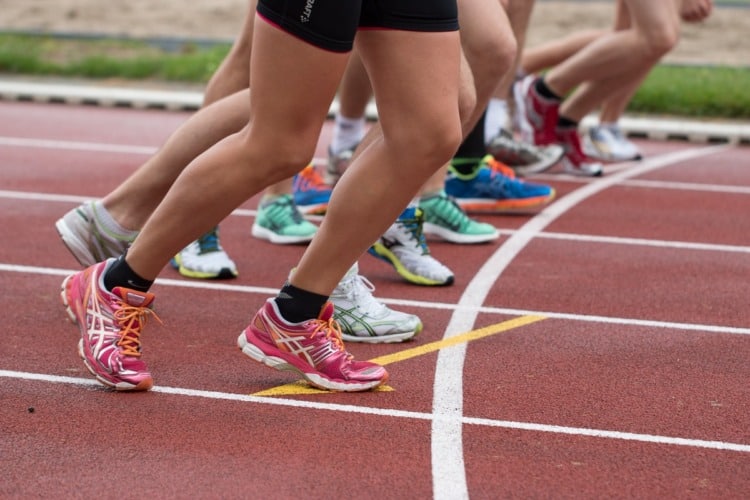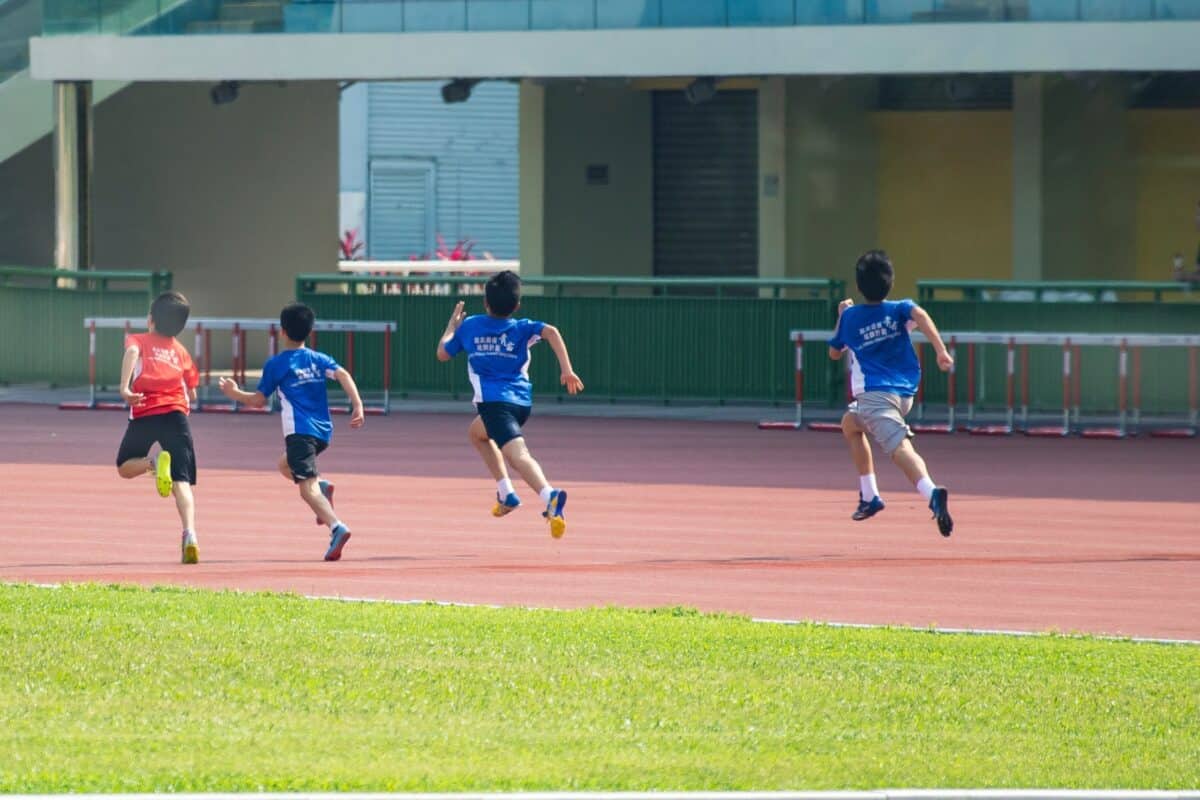Athletics is a sports discipline with a multitude of events, offering numerous possibilities for working within PE. One of these is the introduction of athletics games as a motivating source to address the discipline.
What is athletics?
Athletics is a sport composed of a set of skills and abilities that originate from natural gestures. Its ancient origin dates back centuries before the Christian Era.
Since then, it has evolved and expanded to the events we know today (1).
For its development, all physical condition capacities are involved, depending on the event, some will be more relevant than others. For example, in running, endurance and speed are more important, while in throws like shot put, strength plays a fundamental role.
Coordination and balance are also necessary as resulting capacities to execute actions with precision and efficiency.
Within this, there are different events that can be practiced at school and extracurricular levels, almost in all cases:
- Races: there are short-distance and long-distance races, working on speed and endurance. Similarly, some variations like team relays.
- Jumps: highlighting high jump, pole vault, and the long jump which seeks the maximum horizontal distance.
- Throws: there are four types and they can be classified according to their trajectory or weight:
- By trajectory:
- Linear: javelin and shot put
- Angular: with rotation on the axis: hammer and discus
- By weight:
- Heavy: hammer and shot put
- Light: javelin and discus
- By trajectory:
Athletics games
Basically, athletics games can be divided according to the previous classification, finding games that work on different physical capacities and thus different events.
- Games that work on endurance and thus, favor running. For example, chase games like tag.
- Passing, throwing, and catching games: like 10 passes or dodgeball.
- Relay races with objects, without material, or with batons.
- Athletics games related to jumps: for example, a sack race or an obstacle jump circuit.
Educational treatment of athletics games
The content related to athletics is worked on in Physical Education through motor actions of physical activity in a stable environment.
Within this discipline, it should be remembered that due to its educational nature, it should not be focused on performance, but on its potential as an educational element that promotes the comprehensive education of students, thus fostering motor, social, and cognitive development.
In this case, a good possibility to address the topic is the treatment of a modality of the discipline, or the discipline in general through athletics games.
Some of the objectives that can be set to develop a didactic unit based on athletics games are the following (2):
- Begin learning the technical fundamentals of a series of athletic disciplines.
- Practice a series of athletic disciplines through played forms.
- Establish constructive and balanced relationships with others.
- Contribute to the improvement of motor skills and physical condition.
The unit based on athletics games can be mainly developed during the last years of primary school, as well as the first years of secondary school, where the aim is to introduce the discipline, help students understand it, and make the learning process a playful and fun experience.
In this way, in the last years of secondary education, more technical and specific aspects of the different existing events are worked on.
Relationship of athletics with other educational content
Athletics, including athletics games, presents potential to work on numerous values that promote the comprehensive development of students, such as perseverance, effort and personal improvement, teamwork, and respect for the opponent, care for the environment, especially when carried out in the natural environment.
Additionally, transversal elements such as physical activity and nutrition can be addressed to achieve benefits and a healthy lifestyle, environmental care, and equality and inclusion.
Practical proposal of athletics games
A practical possibility is to propose a didactic unit of 6-8 sessions to work with athletics games.
For example, for the first year of secondary school, focused on athletics games, with the main content being running and throws.
For this, adapted, modified, and also popular games are used, facilitating the learning of technical and tactical fundamentals and the implementation of strategies. Using individual games and collaboration-opposition games.
The first session would focus on the presentation of the unit, conducted in the classroom and explaining the discipline, the events developed in it, and how it will be worked on in the unit.
During the next 4 sessions, work is mainly done through athletics games: 2 sessions for running and 2 for throws. In them, games like the following are practiced (3):
- Individual races where students start lying on their backs, crouching, backwards, etc. at the start, they stand up and run to the finish line (20-40 meters)
- Individual races with unusual movements: holding their feet, with feet together, hopping, crouching, on all fours, etc.
- Team races where the entire line is connected (by the hand, shoulder, hip…) and cannot separate at any time
- Popular athletics chase games like tag, chain tag, hawk, or cut the thread.
- Throwing and catching games like 10 passes, cemetery,
During the practice of these activities, the ludotechnical model is developed (4), explaining within each game the technical and tactical actions and the established roles related to the modality, and similarly, questions are posed that challenge students to understand the game they are executing and its logic.
The sixth session is dedicated to the evaluation of the unit, where students work in groups of 4-6 people (40´), developing an oral presentation that they present during the last 15 minutes of the class, about the different athletics events and the capacities worked on in them.
- They describe the events, the capacities involved, and the practice locations where they can be developed.
Conclusions
Athletics games convey the educational value that the sport itself possesses, promoting through their treatment the comprehensive education of students, offering a playful alternative to conventional sports practice.
In addition to possibilities and resources to practice the content at an extracurricular level, promoting physical activity during leisure time and trying to motivate students to reduce existing sedentary values.
Bibliography
- Guío Gutiérrez, F. Basic fundamentals of athletics. History, technique, regulations, and methodology.
- Valero Valenzuela, A., & Gómez Mármol, A. (2013). Athletics in the educational system. Retrieved from: http://repositorio.ual.es/bitstream/handle/10835/5597/952-3323-1-PB.pdf?sequence=1
- Betrán, J. O. (2007). MIL 169 EXERCISES AND ATHLETICS GAMES (2 VOL.). Editorial Paidotribo.
- de la Educación Física, T. D. (2013). Athletics: ludotechnical approach. Tándem Didáctica de la Educación Física, (44), 109-110. Retrieved from: https://www.researchgate.net/profile/Alfonso_Valenzuela2/publication/303382484_Atletismo_enfoque_ludotecnico/links/573f5bce08aea45ee844fd30/Atletismo-enfoque-ludotecnico.pdf




